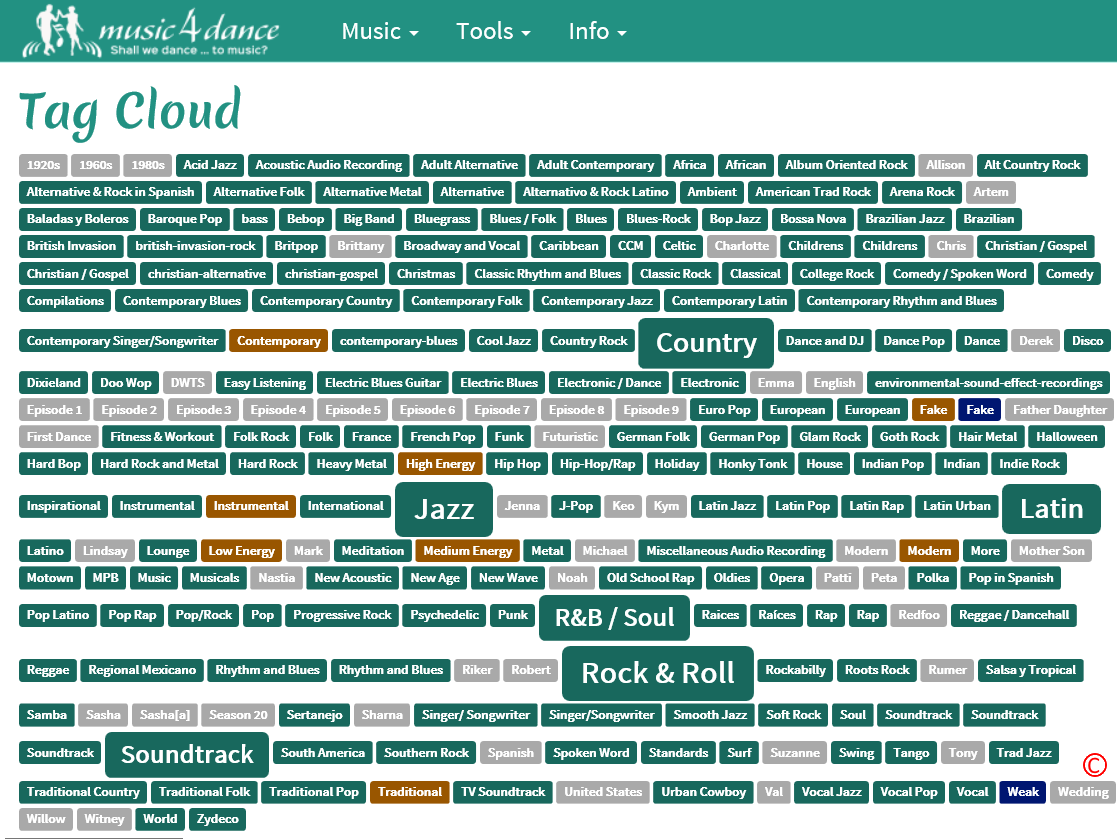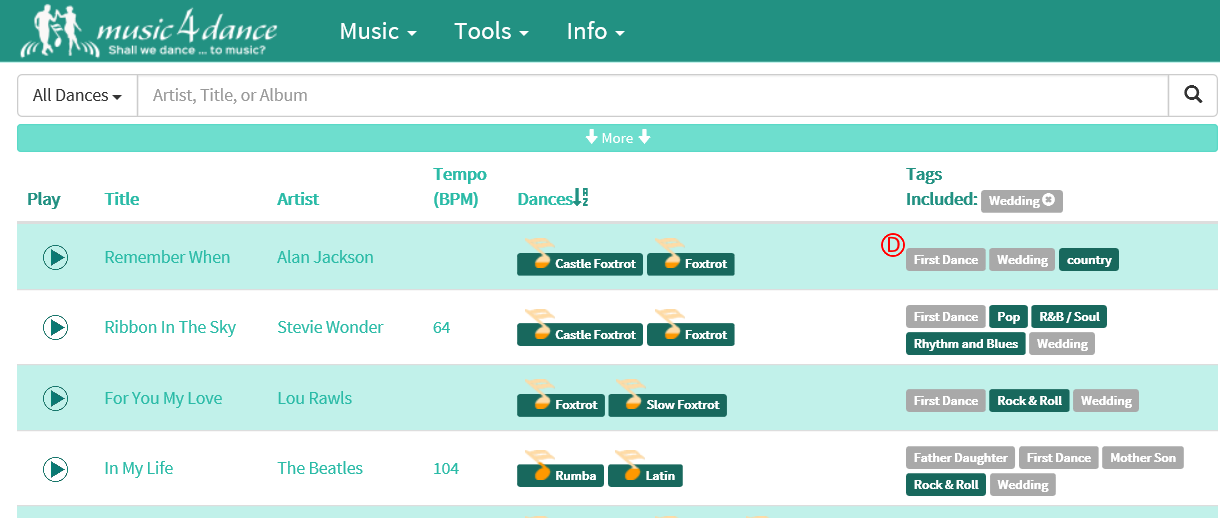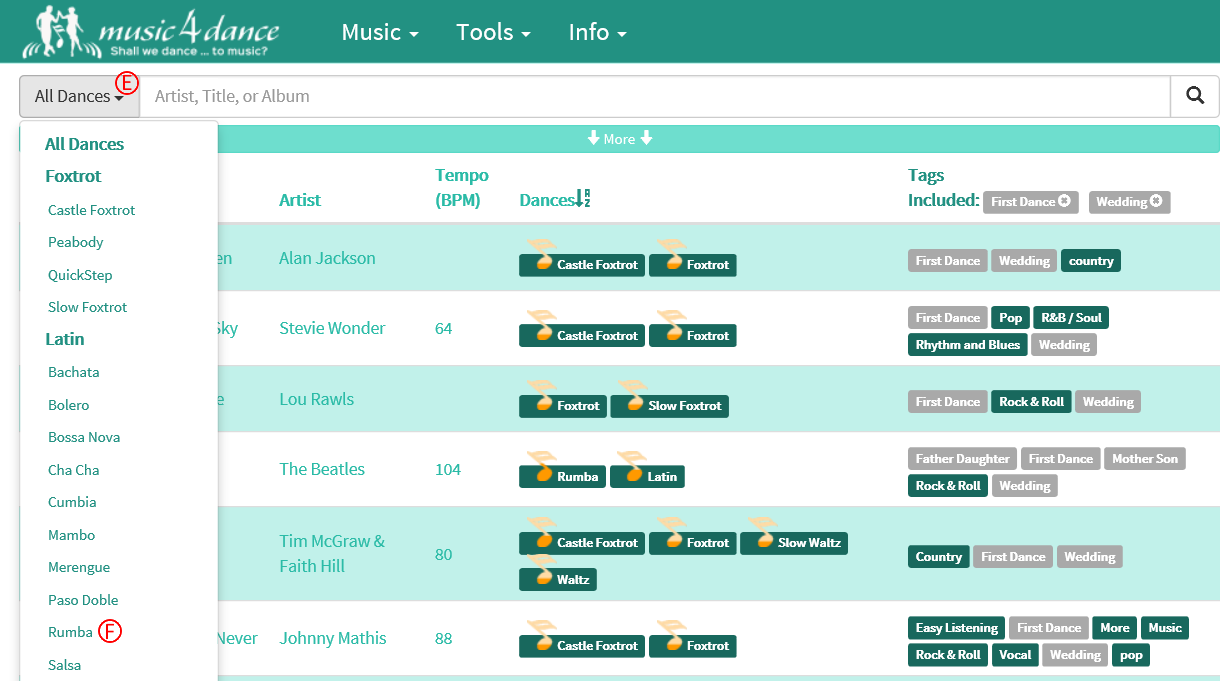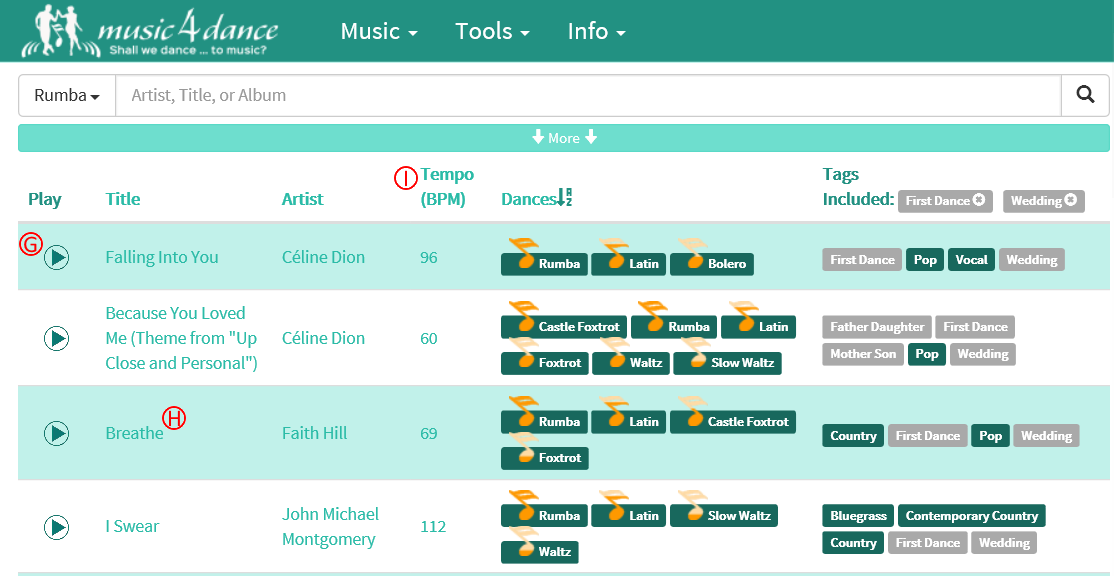Last time I wrote about how music4dance can help you find a dance to match the song you’d like to dance to for your first dance (or other wedding dances). This time, I’ll cover how the site can help you find a song if you already know what dance style you want to dance. Before I dig into that, I’d like to repeat that your local dance studio and your wedding DJ are both excellent sources of ideas.
Since I first wrote about this idea early a decade ago, I’ve made some improvements to the site. The easiest way to find wedding songs that match your dance is to go to the wedding music page (Music -> Wedding on the main menu). There you’ll find a table of dance styles and types of wedding dance. The cells in that table have a number that represents the number of songs we have cataloged for that dance style and also tagged with the type of wedding dance. Click on the number to get to a list of songs where you can play samples and find the full version of the song on Spotify, Apple Music, or Amazon.
The wedding music page is just a shortcut to using the advanced search tool. If you want to search for something unavailable in the wedding dance table, you can do the same type of search using the tool. For instance, I haven’t added Mother/Daughter songs to the table as of this writing. But a few people have tagged songs as Mother/Daughter. So you could go to the advanced search tool, include the tag “Mother Daughter,” optionally choose a dance, and see what comes up.
In addition, when you do an advanced search, you can find the search again on your search page. And if you’re a premium subscriber, you can export results as a Spotify playlist to listen through the songs at your convenience.
I hope this helped. And if you’ve got suggestions for other wedding-related tags, please consider becoming part of the music4dance community and adding your wedding songs to the catalog with whatever tags make sense to you – they’ll be helpful to someone else in the future.
As always, I’m very interested in your feedback, so please share any thoughts and ideas about this post or the site by commenting below or using other feedback mechanisms listed here. In addition, if you enjoy the site or the blog (or both), please consider contributing in whatever way makes sense for you.





